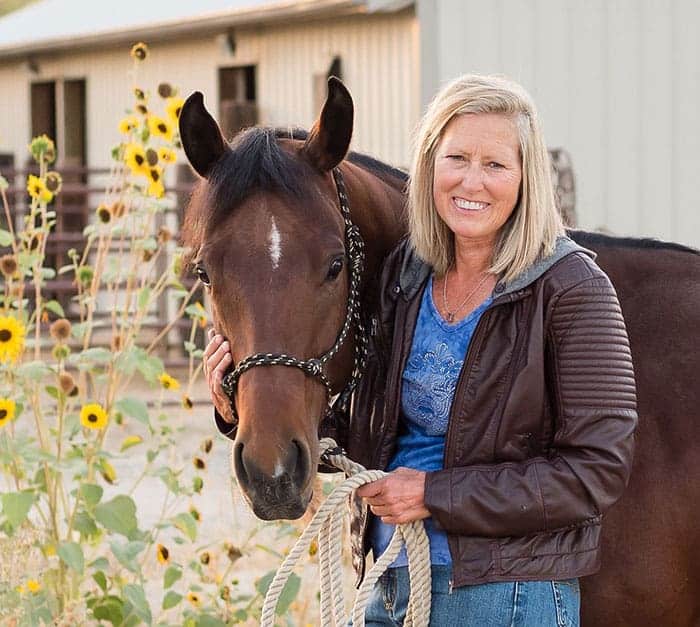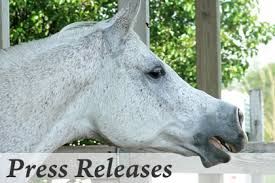Spreading Compost
- Posted by Alayne Blickle
It’s that exciting time of the year when grass is starting to turning green and we’re itching to get our horses back out on pasture. Once soils are no longer saturated and while we still have some spring rains ahead of us, do your horses and your pasture a favor by spreading compost. The nutrients, organic material and beneficial bacteria and fungi in the compost will help your grass plants become more productive.
At Sweet Pepper Ranch this week we are working on just that: spreading compost. We are lucky enough to live in close proximity to several dairies. A friendly visit got me hooked up with one that was happy to deliver dry dairy manure and spread it for only $35/giant truck load. We are thrilled! Using their manure allows us to save our compost for the many landscaping projects we have going, such as the areas where we are putting in lawns and gardens. Plus, they have lots of it (much more than we have compost!) so we’ll have enough for our seven acres of pasture.
Here are a few things to keep in mind when spreading manure or compost:
-
-
Spread in pastures only during the growing season (so that plants can utilize the nutrients and they don’t end up running off your property in winter rains.) Compost can be used in pastures, gardens, and flowerbeds or added to the soil of houseplants.
-
Spread a 1/4 to 1/2 inch layer at a time and no more than about three to four inches in the same area per season. This avoids smothering pasture plants or putting on more nutrients than a plant can use.
-
Compost can be spread by hand or with a manure spreader. Hand spreading is a good option if you’re dealing with just a few acres and only one or two horses. It isn’t as hard as it sounds and can be done with a wheelbarrow and shovel. Simply transport your compost to the area of your pasture where you want to spread and toss away. Be sure to crumble up any large clods as you toss them so that plants can more easily break down nutrients and organic materials.
-
If you are considering purchasing a manure spreader, keep in mind that there are two basic categories: ground-driven and PTO-driven. Ground-driven means that as the wheels turn, the manure spreader belt that moves the beater bars turns and throws out the compost. A ground-driven manure spreader can usually be pulled by an 18 horsepower (or larger) riding lawnmower, a four wheel-drive vehicle or even an ATV. PTO (power take-off)-driven means that the PTO on your tractor will power the drive unit on the spreader. If you choose to go with a PTO-driven model then you’ll obviously need to have access to a tractor with a PTO (not all tractors have a PTO.) You will also need to be sure your tractor is sized to handle the spreader you purchase.
-
Contact your local conservation district to see if they have a manure spreader they loan out. If you are not familiar with conservation districts, they are non-regulatory, non-enforcement agencies that provide education and technical assistance on natural resource issues. There is one in every county in the United States. Many of these districts “own” a manure spreader that they loan out for free to landowners to help with spreading compost.
-
Realistically, when you spread compost it rarely looks like a thin, even layer. It ends up more like clumps here and there. The best way to deal with that is go back through with a harrow (a drag) to break up the clumps and spread out the compost more thinly. If you don’t own a harrow and tractor use a garden rake and go through it by hand, raking thicker areas so plants aren’t smothered.
-
(Editor’s note) Do not spread raw manure on or drag pastures your horses are grazing; this just spreads any pathogens and parasite eggs all around the pasture where your horses will pick them up. Spread only composted manure on active pastures, or spread raw manure only when horses will be off the pasture and the weather will be hot (above 85°F every day) and dry for 30-45 days to kill the parasite larvae/eggs
-
Most parasites and pathogens are species-specific, which means horses cannot get worms from raw (uncomposted) cow manure. So another good way to control parasites and put manure to good use is to spread cow manure on a horse pasture and horse manure on a cow pasture.
-
Read more tips on how to compost horse manure.
Compost is a rich soil enhancement that improves the health of both plants and soil and helps retain moisture. It contains micro- and macronutrients that benefit plants and it adds important organic material to your soil. Plus, it’s good to know that the composting process kills pathogens and parasites in manure. Happy spreading!
Alayne

Written by:
Alayne Blickle
Related Articles
Stay on top of the most recent Horse Health news with













2 Responses
re: Spreading Compost
Hi Carrie, where do you live?
re: Spreading Compost
Our conservation district is a regulatory AND enforcement agency. Please contact them BEFORE spreading manure on your pastures to see if you need a Maure Management Plan. If you do spread manure before having a plan, you could be in for sti